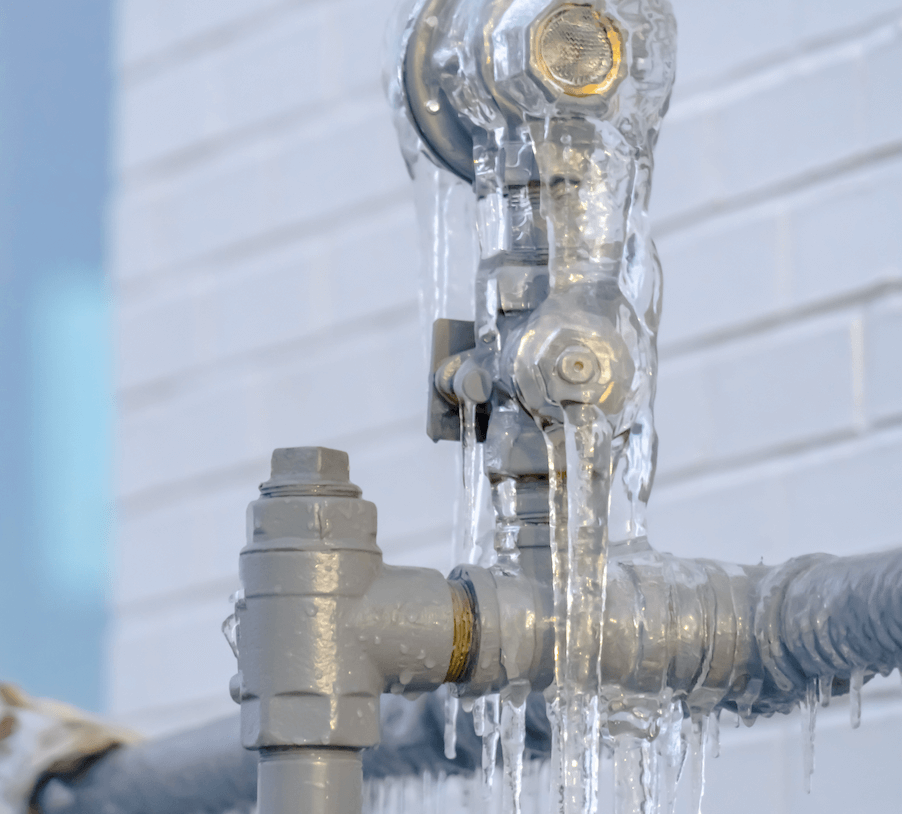Listed here on the next paragraphs you'll find a good deal of good quality information in relation to Prevent Frozen Pipes .

Winter can ruin your plumbing, specifically by freezing pipes. Below's exactly how to prevent it from occurring and what to do if it does.
Introduction
As temperatures decline, the threat of frozen pipes rises, possibly leading to pricey repair work and water damages. Comprehending exactly how to stop icy pipelines is essential for property owners in cool environments.
Avoidance Tips
Insulating susceptible pipelines
Wrap pipes in insulation sleeves or make use of warm tape to secure them from freezing temperatures. Focus on pipes in unheated or exterior locations of the home.
Heating techniques
Keep indoor rooms effectively heated, especially locations with plumbing. Open up cabinet doors to enable cozy air to flow around pipes under sinks.
Just how to identify frozen pipelines
Look for reduced water flow from taps, unusual smells or sounds from pipelines, and noticeable frost on exposed pipelines.
Long-Term Solutions
Architectural changes
Think about rerouting pipelines far from outside wall surfaces or unheated areas. Include added insulation to attic rooms, cellars, and crawl spaces.
Updating insulation
Invest in high-quality insulation for pipelines, attic rooms, and walls. Appropriate insulation helps preserve constant temperatures and minimizes the danger of frozen pipelines.
Protecting Exterior Pipes
Yard hose pipes and outdoor taps
Disconnect and drain yard hose pipes prior to winter. Mount frost-proof spigots or cover outside taps with shielded caps.
Comprehending Icy Pipelines
What causes pipelines to ice up?
Pipes ice up when exposed to temperatures below 32 ° F (0 ° C) for extended durations. As water inside the pipes freezes, it expands, taxing the pipe wall surfaces and possibly creating them to burst.
Dangers and problems
Frozen pipes can lead to water system disruptions, home damages, and expensive repairs. Burst pipes can flood homes and cause comprehensive architectural damage.
Indications of Frozen Piping
Recognizing icy pipelines early can stop them from bursting.
What to Do If Your Pipelines Freeze
Immediate actions to take
If you believe frozen pipes, keep taps open to alleviate stress as the ice melts. Make use of a hairdryer or towels taken in warm water to thaw pipes slowly.
Verdict
Protecting against frozen pipelines calls for positive measures and fast actions. By understanding the reasons, signs, and preventive measures, house owners can protect their pipes during cold weather.
6 Proven Ways to Prevent Frozen Pipes and Protect Your Home
Disconnect and Drain Garden Hoses
Before winter arrives, start by disconnecting your garden hoses and draining any remaining water. Close the shut-off valves that supply outdoor hose bibs and leave the outdoor faucet open to allow any residual water to drain. For extra protection, consider using faucet covers throughout the colder months. It’s also important to drain water from any sprinkler supply lines following the manufacturer’s directions.
Insulate Exposed Pipes
Insulating your pipes is an effective way to prevent freezing. Pipe insulation is readily available at home improvement stores and is relatively inexpensive. Pay close attention to pipes in unheated areas such as the attic, basement, crawl spaces, or garage. Apply foam insulation generously to create a buffer against the cold. You can also wrap your pipes in heat tape or thermostat-controlled heat cables for added warmth.
Seal Air Leaks
Inspect your home for any cracks or openings that could let in cold air. Seal any holes around the piping in interior or exterior walls, as well as the sill plates where your home rests on its foundation. Additionally, make sure to keep your garage door closed unless you’re entering or exiting. Leaving it open creates a significant air leak that can lead to frozen pipes.
Allow Warm Air Circulation
During cold snaps, it’s essential to allow warm air to circulate evenly throughout your home. Leave interior doors ajar to promote better airflow. Open kitchen and bathroom cabinets to help distribute heat consistently around the rooms. If you have small children or pets, be sure to remove any household chemicals or potentially harmful cleaners from open cabinets for safety.
Let Faucets Drip
A small trickle of water can make a big difference in preventing ice formation inside your pipes. When temperatures drop significantly, start a drip of water from all faucets served by exposed pipes. This continuous flow helps prevent the water from freezing. Additionally, running a few faucets slightly can relieve pressure inside the pipes, reducing the chances of a rupture if the water inside does freeze.
https://choateshvac.com/6-proven-ways-to-prevent-frozen-pipes-and-protect-your-home/

I stumbled upon that content about How to Prevent Your Pipes From Freezing when surfing the web. Feel free to take the opportunity to promote this blog post if you enjoyed it. I recognize the value of reading our article about How to Prevent Your Pipes From Freezing.
Click Here
Comments on “How to Protect Pipes from Cold Weather Damage: Important Tips”